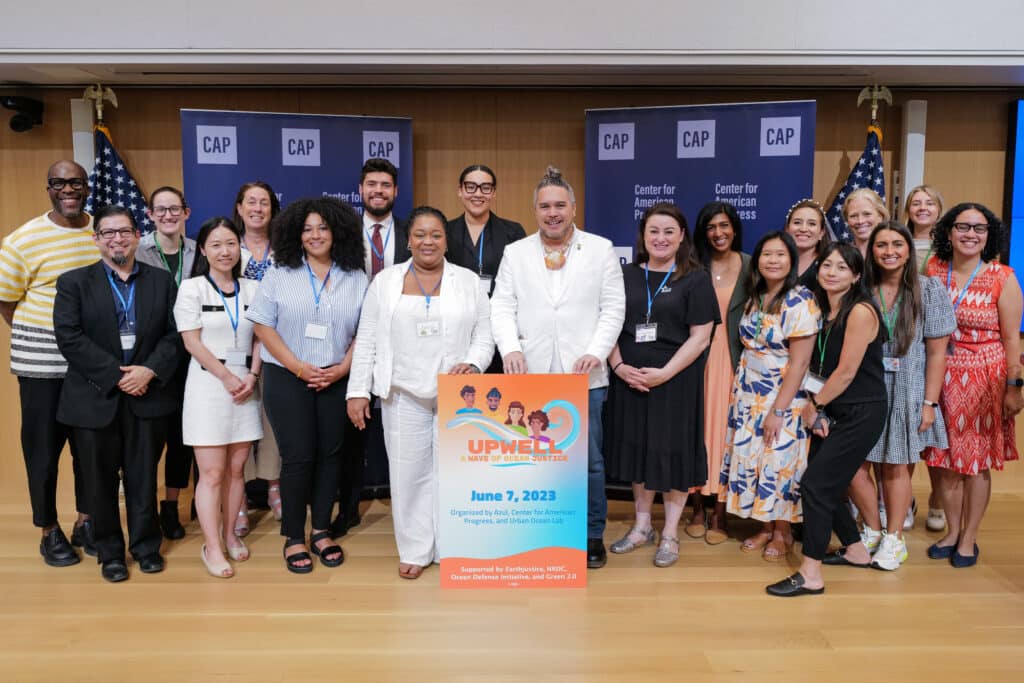
Beyond 30×30: What the future of conservation should look like
By Kat So
Kat So is a campaign manager in the Energy & Environment Department at the Center for American Progress, a multi-issue policy think tank based in Washington DC. She is also the project coordinator for the Ocean Justice Forum. In this blog she discusses how we should measure conservation success and implement equitable 30×30 policies.
During the very first week in office, the Biden-Harris administration set the first national conservation goal of conserving 30 percent of US lands and waters by 2030, then further outlined the methods and practices about how to reach this goal in the America the Beautiful Initiative. A 2022 CAP report lays out the opportunities that the administration has to make significant gains towards this ambitious goal through executive action.
As the first term of the Biden-Harris administration comes to an end, it’s necessary to assess the progress made towards reaching 30×30 and what strategies have and have not worked. This has given rise to a national discussion amongst the conservation community – what counts and what doesn’t? By some calculations the US has protected 12% of land and 26% of the ocean. Yet, these numbers mask some of the shortcomings of using 30×30 as a measurement of conservation success.
The protection of nature is vitally important in a time when the United States is losing a football field of natural area every 30 seconds. Yet in the ocean, the 30×30 goal has led national NGOs and the government to further prioritize the establishment of marine protected areas as large and as quickly as possible.
As a result, nearly all of the attention has been on offshore, pelagic regions, especially those in the Western and Central Pacific. In fact, nearly 99.5 percent of the marine reserves in the United States are in Hawaii and the Pacific Island territories. Removing large parks in Alaska and swaths of the Pacific ocean, only 7% of land area, 0.6% of state waters and 0.01% of federal waters are protected.
The hyperfocus on reaching the 30% threshold has obscured the real goal of conservation and the spirit of Biden’s America the Beautiful commitment – advancing durable, high-quality conservation solutions that benefit communities and wildlife and protect America’s natural and cultural heritage. The questions we should be asking are – What types of areas are being protected? Where are these areas located? Have the communities been involved in the process?
So, if area targets aren’t enough, what else do we need to measure what conservation success should really look like?

Conservation success should be measured by increasing equitable access to nature for all people, focusing on those areas that are culturally important to people and their identity, and protecting habitats that are high in biodiversity and carbon sequestration.
Most of the ocean areas under the greatest threat, and those that are most important to people, cultures, economies, biodiversity conservation, and carbon sequestration, are much closer to shore in places with large numbers of people. Habitats including salt marshes, seagrass, mangroves, and corals, and keystone species like oysters, kelp, and salmon, have supported communities of people for millennia in North America, and are all threatened by human use, development, pollution, and climate change.
Additionally, historical inequities—deeply rooted in the United States’ long history of segregation, racial discrimination, and exclusion—have led to restrictive coastal access policies with only 10% of the U.S. coast and Great Lakes having strong legal protection laws ensuring equitable public access.
The conservation movement in the United States is at an important crossroads. Instead of debating “what counts,” we should focus our efforts on effective and equitable 30×30 policies with a diverse portfolio of habitat types in all ecosystems across the United States. The America Beautiful for All Coalition’s policy agenda lays out how to do just that by working with frontline and Indigenous communities to increase equitable access, celebrate cultures and identity tied to uses of the ocean, and protect and conserve nature, while integrating sustainable levels of human use and protection of the sacred.

Learn More:
To learn more about this work, please visit: Tackling Climate Change and Environmental Injustice – Center for American Progress To learn more about the author, you can follow Kat So on Twitter or Linkedin.